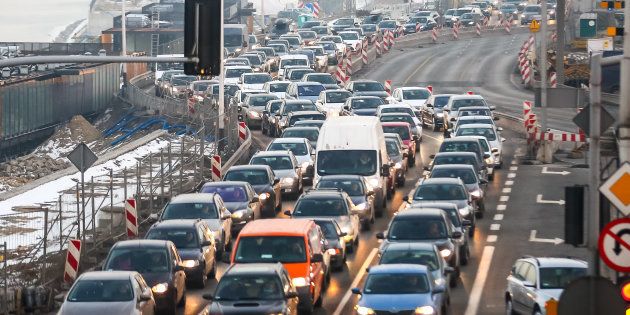
The United Nations estimates that as much as 66 percent of the global population will live in urban areas by 2050. This points to a future where cities will face many challenges, mostly centred around having to leverage limited resources to deal with a growing influx of people needing services. Public transport is one of the many sectors that will experience strain because of high traffic volumes which can lead to increased road fatalities.
A more citizen-centric business model for service delivery can help alleviate problems such as traffic congestion, safety, and shortages of resources, especially in public healthcare facilities. Citizens need tangible outcomes, enjoyable experiences and more personalised services. This is what will capture the hearts of many citizens across the continent.
Smart traffic and IoT are critical for cities to operate more efficiently with better-managed traffic flow and open lines of engagement between cities and citizens. This innovation holds the potential of a much safer and inclusive community with the amplified use of digital devices for municipal services across the country.
Reimagining the ways cities work with IoT
The Internet of Things (IoT) is expected to become a $1.46 trillion industry by 2020 and is expected to have a positive influence across all sectors of business, including public transport, security and in the provision of public healthcare. South African cities stand to benefit immensely from IoT, especially with the high quality and speed that comes with network connectivity and infrastructure.
The escalation in urbanisation and climate change is also putting pressure on cities' management. These require speed and agility, to be able to respond in real-time to challenges such as road accident emergencies and service disruptions. The biggest challenge we see, so far, is the adoption of technology into cities' services models, the process requires an innovative technology platform with the ability to work with multiple data sources across all services while providing real-time insights for cities to make fast, accurate decisions.
Four ways IoT & Big Data can enable smart city traffic management
There are three key factors contributing to a smart traffic city namely; people (both drivers and passengers), vehicles and road infrastructure. IoT is transforming how each of these factors operates harmoniously, by creating opportunities for:
- Ensuring a smooth flow of traffic - Keifuku Bus Company in Japan provide services and solutions that are putting people first using the SAP connected transport safety technology, which allows for data sharing amongst most major cities that are installed with traffic light sensor technologies to ensure a smooth flow of traffic.
- Leveraging data to provide real-time insight - with the amount of traffic data available in South Africa alone, measuring, analysing and managing traffic volumes could be much better, by using technology and taking advantage of the traffic big data. The ability to analyse traffic big data will help cities consolidate different data sources into a single reliable source for better traffic management, reporting and insight.
- Integrating data from multiple sources to create a single accurate view of traffic management - Current South Africa road traffic data is not integrated, as it is collected from multiple sources which make the quality of data unreliable. According to the Road Traffic Management Corporation, having a quality comprehensive traffic management system is vital for accurate data collection, analysis and reporting across all factors including human casualties and related costs.
- Unlocking new innovations to improve the citizen experience - Leveraging technology presents cities and transport authorities with innovative ways of how to improve road safety, provide sustainable, efficient public transport, manage traffic flows and speed up response time to meet the inevitable challenges of rapid urbanisation.
